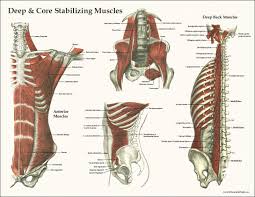Crawling Your Way to Chiseled Abs
Since we're now 8 days into the New Year, I figure it's officially safe to bring up talk about New Year's Resolutions. As 2015 approaches it's 2 week anniversary, the local gyms are finally beginning to recover from the post-New Year membership boom. The gym regulars have finally returned, glad to be relieved of those performing bicep curls in the squat rack. Among them are the brave few who have actually stuck to their resolution. If you're one of these brave men and women, it's important that you give yourself a pat on the back for making it this far. By now, you've probably logged anywhere between 4 and 6 training sessions, begun incorporating movement into your daily routine more frequently, and, hopefully, you've been introduced, or made a triumphant return, to the weight room. It's important that you stick to your resolution. Remember, this goal is important to you, and you made it for a reason. Whether your resolution was to finally bench 350, simply lose that pudge thats been sticking around for entirely too long, or achieve the core strength of these gentlemen...
It's imperative that you have a game plan set up to help you tackle this challenge. If your resolution is fitness related, it's likely that you'll be expecting a trimmer belly from all the hard word you'll be putting in. Your game plan will probably include 100's of sit-ups, miles upon miles of jogging, and a new diet plan void of any form of carbohydrates. Now I can go on and on about why cutting carbs may not be the wisest choice (especially if you're also planning on ramping up your physical activity), but for now I want to tackle the misinformed notion that sit-ups are the way to go for developing core strength.
Most people with normal cognitive function would agree that sitting hunched over your computer is not the most ideal position for us to spend our time. They recognize assuming this posture just isn't healthy for our spine, and can contribute to neck pain and back pain that haunt the desk-jockey. Unfortunately, many of us don't even consider the fact that we're replicating and training this poor posture over and over again when we perform a sit-up. Not only that, but some people will take it a step further, and add load to the movement. Needless to say, I am not a fan.
"So what am I supposed to do to get that rock solid core?" - you may ask. Well, I'm here to provide another way... Crawling. Tiger Crawls, Leopard Crawls, Spider Crawls, Alligator Crawls. You may think you're "too advanced" to waste your time crawling, but even Green Bay Packer CB Sam Shields incorporates crawls into his workouts. Check out the video below to watch our very own Steve Reed demonstrate a wide variety of crawl variations.
Why crawl? Well, it's really very simple. Contrary to popular belief, our core is comprised of more then just our rectus abdominals (your 6-pack). You have your intrinsic core, which consists of your diaphragm, your transverse abdominals, your pelvic floor and your multifidi. You also have your extrinsic care, which consists of your rectus abdominals and your internal and external obliques. Some may argue (and I'm inclined to agree) that your glutes, hip flexors, and your spinal erectors also consist of your "core".
There are so many muscles tied to core stability that it's ludicrous to assume that the common sit-up will truly be able to train all of them at once. Really, we're only training trunk flexion when we're performing the sit up. This is the function of the rectus abdominis and the psoas, while both pairs of oblique muscles work as synergists. Crawling, on the other hand, hits just about every core muscle I've mentioned, a few others I have neglected, while also providing a huge amount of side benefits.
The challenging part of performing any crawl variation is maintaining a neutral spine, while keeping your hips still and your breathing steady. Unless you're crawling on the moon, gravity is going to be pulling you to the floor, and you're going to have to give it everything you've got to keep your core engaged and avoid sagging your lower back. This will present an enormous challenge. If Sam Shields uses crawl variations in his workout, you better believe you'll be feeling the burn after a 20 meter crawl.
On top of that, crawling is a great way to build shoulder, hip, and knee stability. It's a low-impact movement that will also cause your heart rate to shoot through the roof. This results in a joint-friendly exercise that also causes you to burn a load of calories and shed that unwanted belly fat. You can take it a step further by adding chains or dragging a sled to supercharge the benefits and really ramp up the stimulus.
Last, but certainly not least, crawling is a great base-building exercise for field sport athletes and runners. I mentioned the low-impact nature and the effect on joint stability, but a proper crawl is also executed using contralateral (opposite) limb movement. This means you should be taking a step with your left leg while simultaneously reaching forward with your right arm. We initially develop the ability to perform contralateral movement during early childhood development. The left hemisphere of our brain controls the right side of our body, and vice verse. Executing a crawl with proper contralateral movement in turn stimulates both sides of our brain, and strengthens the pathways between the two hemispheres.
Now that you've seen the light, ditch those sit-ups and start incorporating crawling into your workout routine. Not only will your waistline thank you, but the effect on your overall strength and stability will blow your mind. My New Year's Resolution: Crawl more in 2015.


